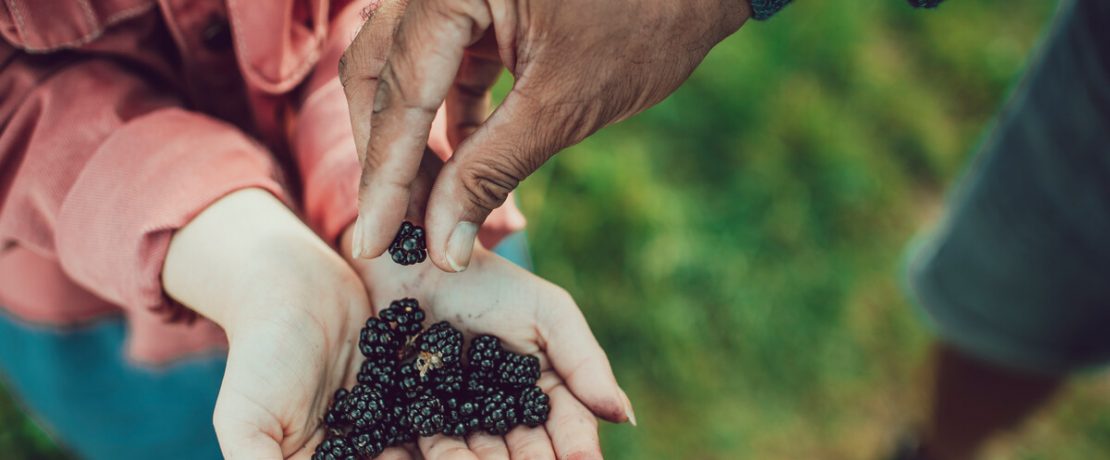A first forage into foraging
One suburbanite’s experience of foraging and discovery of the extensive culinary wealth in the British countryside. Terry Over from CPRE Hertfordshire explores the wonderful world of foraging.
Foraging. It all started with the challenge to find a healthy low carbon footprint fruit that I would enjoy eating during the winter.
That meant a decision to eat more seasonally and locally. My parents had done that, so had their parents and every generation before them but for many years we have cherished the variety of good food grown in warmer climates and transported long distances to our shops in order to satisfy our desires and curiosities. I wanted to reduce my personal carbon footprint so food miles was a good place to focus some of my attention.
The easy choice would have been to eat British grown apples and pears but regretfully I have never been a huge fan so I yearned for something else. Maybe I could fill the freezer with blackberries to enjoy through the winter months. Previously a blackberry was an enjoyable snack on a country walk but that year it became the focus of my attention to harvest numerous tubs of the delicious wild fruit. Over the August and September harvest season I gathered the fruit of the thorny Rubus fruticosus, commonly known as bramble, from various locations, always ensuring never to take too much from each bush so enough was left for my fellow wildlife foragers. Frozen individually on a tray, then bagged in bulk for the freezer, to enjoy in many dessert and baking guises thereafter.
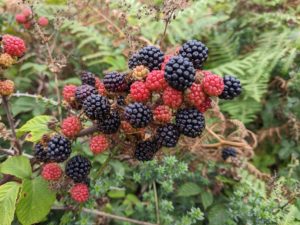
Each outing to gather blackberries was a rewarding encounter with the countryside. Respect for the bramble was earned, the skill of picking without being scratched to pieces was learnt and observing more of the biodiversity within the prickly shrub was an education. Then in the eating, all the health benefits of this delicious berry were savoured. Local, free and healthy – what more could be better for my fledgling sustainability journey. I looked at nature closer and all because initially I wanted a healthy home grown fruit for the darkness of winter; it was a simple eye-opening encounter for a suburbanite uncovering the treasures of nature.
If blackberries could provide this small life style change then what else could the countryside on our doorstep share with our family. I read about foraging and learned more of the extensive culinary wealth within the British countryside.
However in the chaotic busyness of family life and numerous other commitments it was about finding a few simple beneficial sources of health and enjoyment that could be stored for current and future use, which thus far has meant foraging for:
Elderflower cordial is the result of harvesting the beautiful frothy white heads of Sambucus nigra, the elder tree or shrub that meanders through and delights many an English hedgerow from late May.
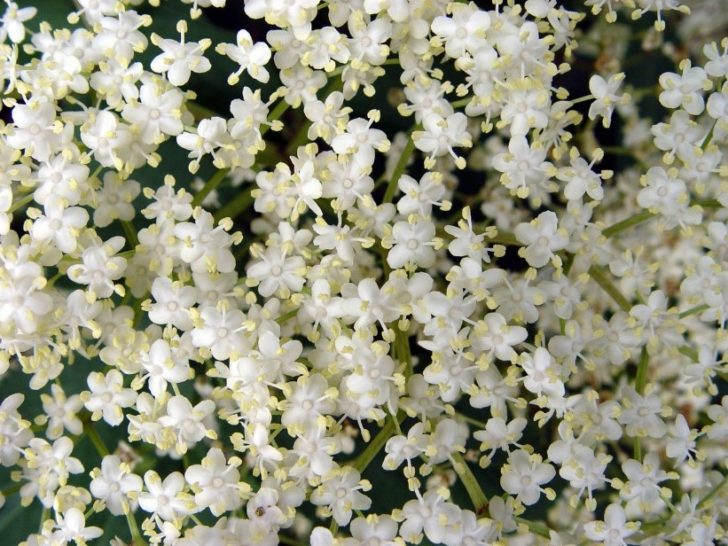
It is a joy to make and whilst it is the most refreshing drink of summer, a few bottles always make their way into the freezer for tiding us over until next summer’s batch can be prepared. The recipe that has worked for me is as follows:

Rose hip is known to be one of nature’s richest sources of natural vitamin C so we produce a syrup and granules from it. The syrup we freeze in bottles for hot drinks and cold remedies during the winter and the dried granules for making tea all year round.
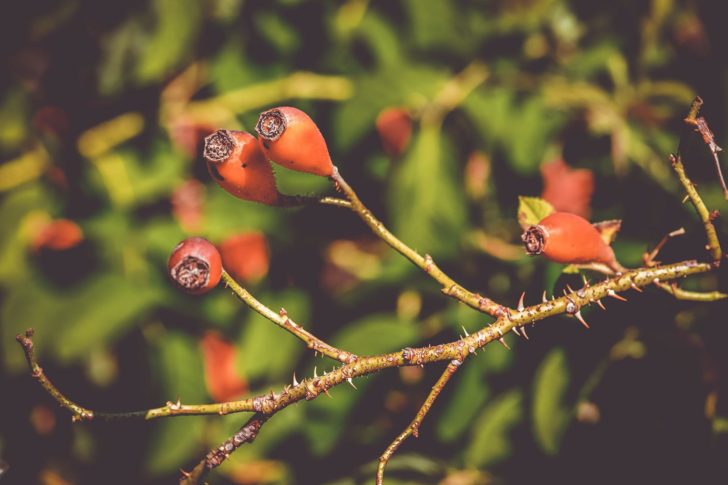
They beautifully adorn our wild dog rose (Rosa canina) during the Autumn and Winter and the firm hips can be harvested at any time. To make the syrup I used 1kg rose hips, 3 litres water and 400g dark brown soft sugar, then followed these directions:
- Bring 2 litres of water to the boil.
- Chop rosehips in food processor until mashed up, then add to boiling water.
- Bring water back to boil, then remove from heat and allow to steep for 20 minutes.
- Pour rosehips and liquid into a strainer of sorts; I used muslin cloth, others recommend a jam making jelly bag. Allow the juice to drip through into another saucepan and gently squeeze the strainer to extract as much liquid as possible.
- Add rosehip pulp back to the first saucepan, add 1 litre water, boil and repeat process above.
- Add sugar to the strained rosehip liquid, heat to dissolve and allow to simmer for 5 minutes then decant. We use sterilised small glass bottles, such as from tomato ketchup or olive oil, so we can freeze and bring out small quantities at a time to keep in the fridge.
- Dilute to drink; I particular love it as a hot drink mixed with some elderberry cordial but I understand it is equally delicious on pancakes, waffles, rice pudding, yoghurt or ice cream. The Woodland Trust advise “It will lose flavour and vitamin potency as time goes by though, so it’s a good idea to use your autumn batch before spring comes around. If you have any doubts don’t consume it. Trust your nose, and leave it if it has begun to ferment”
Elderberry cordial production for me was initially the result of wanting to replace shop bought “squash” in order to avoid yet another source of single use plastic, namely the bottle. I am so glad I made the change for I simply love the taste of elderberry as a warm drink. The weight of evidence, even on a quick internet search, appears to suggest that there are also numerous health benefits.
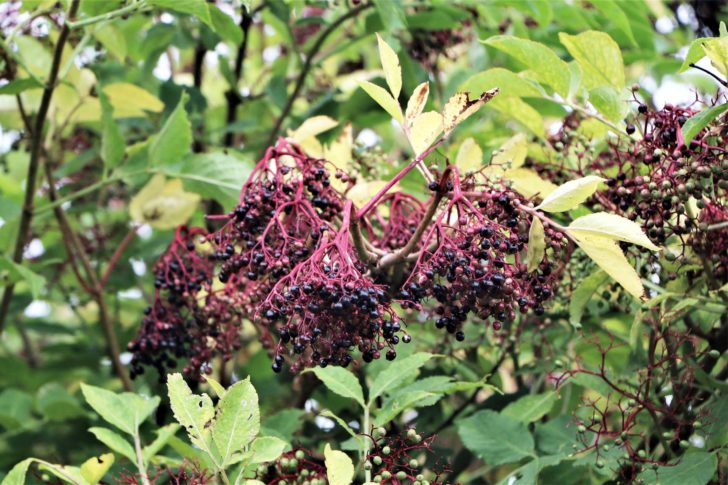
The recipe that has worked for me is as follows:

Conker [laundry detergent] whilst poisonous and definitely not edible it has significantly helped to reduce our carbon footprint – no synthetic chemicals going down the drain and a source of laundry detergent right on our doorstep during the Autumn. We simply collect a good quantity of conkers from local horse chestnut trees (Aesculus hippocastanum), discard the spiky shells and separate the brown coating from the white seed inside. This seed contains saponins and it is this that provides the soapiness and cleaning agent. We crush the seed, blend to small lumps then dry them so all moisture is removed; this will allow them to be stored and last for many months. When required we boil and steep overnight in water to produce a liquid detergent that can be used for effective low temperature washing.
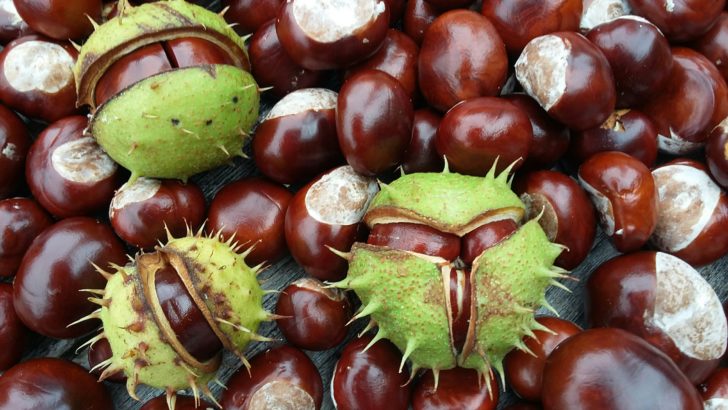
I believe anyone could adopt the above foraging treasures with a quickly learnt or taught knowledge of how to identify blackberries, elder, rose hip and horse chestnuts. If in doubt get yourself along to a guided walk or talk from a friendly local environmental group such as the Woodland Trust at Heartwood Forest near Sandridge or the Hertfordshire branch of the British Naturalist Association where welcoming experts are more than happy to enthusiastically share their knowledge.

Just five items of local natural produce but they have allowed me to reduce my carbon footprint, improve my diet and appreciate more deeply the amazing bounty of nature in our countryside.
—
If you enjoyed Terry’s article about foraging, you may also like his article on saving the planet from the laundry room!
